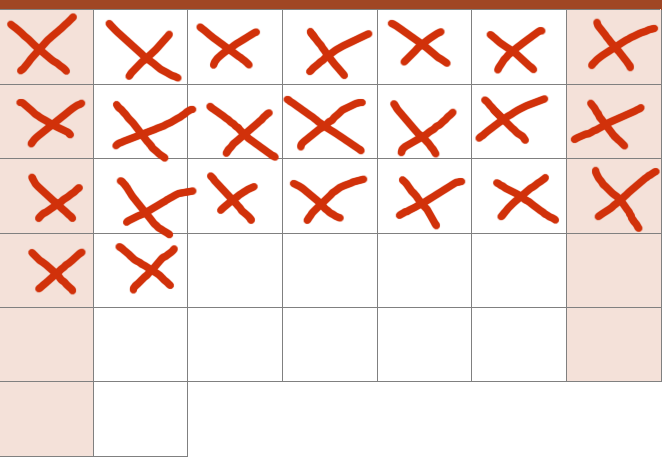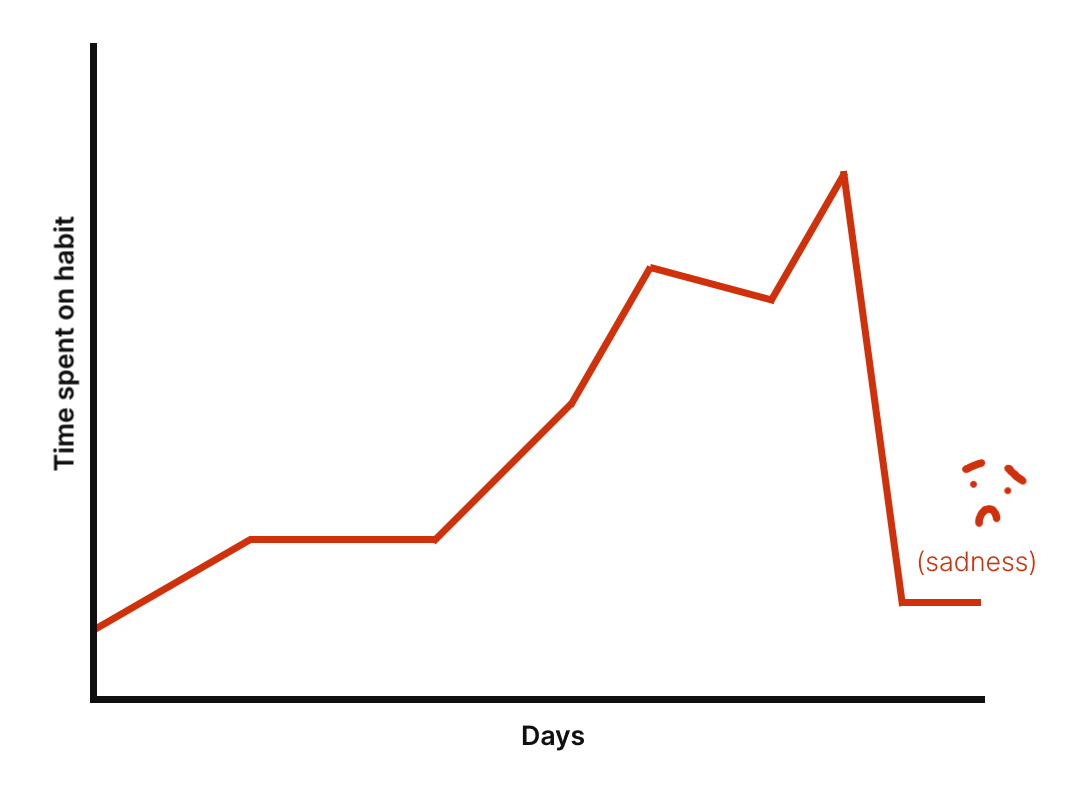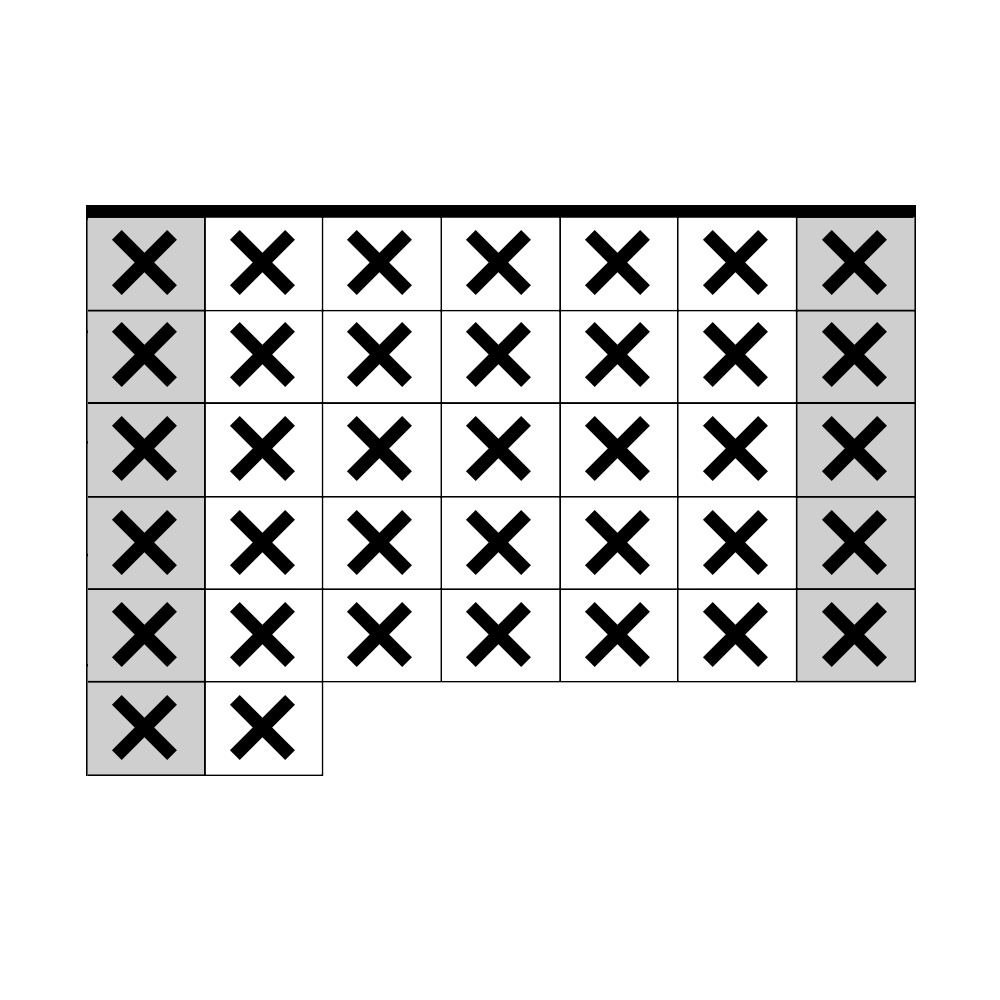If you’ve ever struggled with keeping a consistent habit going, whether it’s reading, working out or meditating, then this article is for you.
We often try to do too much when we start a new habit. Let’s imagine you’ve just bought a gym membership and have committed yourself to an hour of working out for six day a week.
Then when life inevitably interferes in your overfull schedule or when you don’t want to get out of bed, the whole system breaks down. You won’t want to go anymore because the idea of spending a whole hour at the gym exhausting even as a thought.
In this article, I’ll share 5 tips I’ve learned in my struggles to keep good habits going. You can apply these to your own life to stick to your habits and achieve your goals.
Table of Contents
1. Lower the bar
When you force yourself to go to the gym for a full hour every day, to meditate for 30 minutes, and to replace your evenings watching Netflix with reading, you’ll most likely burn out after the first few days.
Instead, what if you lower the bar down to working out for 10 minutes three days a week, to 5 minutes of meditation, and to reading 2 pages. You’ll be way more likely to keep up your small habit in the long term.
Once you’ve established a habit, you can slowly level it up in small steps like going to the gym 4 times a week instead of 3, or meditating 4 minutes a day instead of 2. Make sure you don’t start increasing too quickly. The power of this tip lies in keeping the bar on the low end of your activity level.
It’s an exercise in humility to admit that you will not be able to keep up an hour of meditation a day, to lower your expectation for yourself to maybe just 2 minutes. It doesn’t matter how low you have to go, we all start somewhere.
2. Using momentum to your advantage
If you only have to read 2 pages a day, you’re gonna be completely unfazed by the idea of sitting down and opening the book.
Once you’re strapped into doing an activity, you’ll find it far easier to keep doing that activity instead of switching to something else. So most likely you’ll read more than those 2 pages. If you read 10 pages on average, you’ll be done with a 300 page book in a month. That’s 12 books a year.
But make sure you don’t force yourself to read 10 pages. It’s all about keeping a consistent habit going even when times get tough. If you have a really busy day, read 2 pages and don’t feel bad about it. That’s the goal: 2 pages. You did it.
3. Don’t break the chain
The successful comedian Jerry Seinfeld is often credited for this effective technique to stick to your habits: log your daily habit as an X on your calendar and don’t break that chain of X’s.
Humans are visual creatures. To give you motivation to keep going, you need a visual representation of your consistency of habit.
You can buy a simple calendar and fill it up with an ‘X’ for every day you’ve done your habit. You could also make your own habit tracker on a piece of paper, and list your habits as columns and rows as dates, then put an ‘X’ in the squares you’ve completed.

Recording time
If you’re already tracking your habits, you might get the idea to log the time you spent performing the habit, instead of just crossing off the day if you performed your minimum. You might start to log the amount of pages read or amount of minutes spent meditating. But this added step may actually be detrimental to achieving your consistency goals.
Give it a try if you’re enticed, and if it works for you, by all means keep going. But what I’ve found is that you’ll want to challenge yourself to beat your previous work by an extra page or an extra set at the gym.
This mentality can be helpful in certain areas, but since we want to keep the bar low and take into account our human imperfections, the bad days, and the randomness of life, perhaps it’s better to equate small effort on a bad day to big effort on a good day by labelling both with an ‘X’.
You could feel bad if your progress in minutes spent meditating looks like: 2,4,4,8,10,9,12,2,2. Imagine you see a graph of this data, dropping off at the end. You’ll be demotivated; it’s a stain on your record. Even if you climb back to your previous highs, it looks bad on your history.
If you log your time, bad days will show up as negative sections in the graph of your progress, even though we should actually celebrate keeping a habit up on bad days. It’s far harder to work out for 5 minutes when you’re down than 20 minutes when you’re all happy. The fact that you still did your 5 minutes should be a glowing positive, not a drop down in progress.
To illustrate the sadness you will feel from graphing your progress, I’ve provided an example graph below.

4. Don’t compare yourself to others
If you spend any time on the internet, you’ll have seen the ripped fitness influencers, the people who have read 200 books last year, and the rappers dressed in diamonds.
When you compare yourself to these people, you’re comparing yourself to the image of the best parts of successful people who have dedicated themselves to a single aspect of life. If you want to go on a run every morning to prepare for a half-marathon., it’s no use comparing yourself to an Olympic athlete who doesn’t need to go to work at 9.
Compare yourself to who you were yesterday, not to who someone else is today.
Jordan Peterson, 12 Rules for Life
Instead, look to your own past. The fact that you’ve managed to survive this far means that you have learned lessons and developed qualities that put you far above your past self.
If you’ve kept up a small habit for a week, look at the position you’re in today compared to where you started. That progress is far more noble than any influencer flexing on instagram.
An upwards trajectory is better than being in a good place.
5. Another cookie for the cookie jar
Success doesn’t come from a short burst of effort here and there, it comes from long-term consistent effort in sober portions. Small habits, executed consistently across time bring forth positive change.
A common piece of advice to reach your goals is to forget about them and focus on the systems you’re using to achieve those goals. Don’t focus on having to write 100,000 words to complete your book. Doing so will make your daily work seem insignificant. Instead, focus on writing your 200, 100, or even 50 words a day.
You can’t bring down the word-count of your goal, you can only focus on increasing the word-count of your draft right here, right now, by this little bit.
You do not rise to the level of your goals. You fall to the level of your systems.
James Clear, Atomic Habits
David Goggins, a Navy Seal who has numerous ultra-marathons under his belt, uses the analogy of a cookie jar. Every time he goes out for a run, it’s another cookie for the cookie jar. Whenever he feels down, he opens the jar and looks at all that he has accomplished to reset his mindset and continue to get those cookies.
You don’t have to keep a physical jar. But when going to the gym, you can increase your focus and presence by thinking of the task as just earning another cookie for the cookie jar.
Forget about the goal; you don’t need a certain amount of cookies. It’s just this one cookie you’re going to get. Later you can think back on those times that you were sore and tired but you still went to the gym. The cookies you earn now will fuel you in the future.
Summary
At the start we talked about being humble in what you ask from yourself and to keep the bad days in mind when you plan a habit. When you’re humble and only set the goal to read a page a day, you can take advantage of the momentum and will probably over-achieve your expectations.
When your bar is set low, it’s easier to build a chain of habit. You can’t improve on a habit you’re not doing. Record your completed habits to get a visual representation of your work.
When you have a bit of a chain you can look back on your own progress and see the positive change you’ve made, instead of getting yourself down by looking at Instagram models or successful authors.
Every bit of progress, every little challenge overcome, can build your mental repository of past achievements, which you can use as motivation boosters in the future. Go out and get the cookie.
Final Words
I hope that this article helps you to make the positive change you want to in your life. It may seem selfish at times to focus on your goals and your habits and your time. But keep in mind that the positive change you make for yourself ripples out into the lives of your friends, family, loved ones, etc.
When you become a better person, you can take better care of others. When you grow more competent in a skill, you can be of more use, be more helpful. When you work on fixing your flaws, you can improve your relationships and interactions with everyone you meet. You can become a force for good.
Now get that cookie.
If you want to read more about using small habits to make positive change in your life, I recommend picking up a copy of James Clear‘s Atomic Habits.
If you’ve found the tips useful, consider subscribing to the newsletter to have me cheer you on in your email inbox. Thank you!

